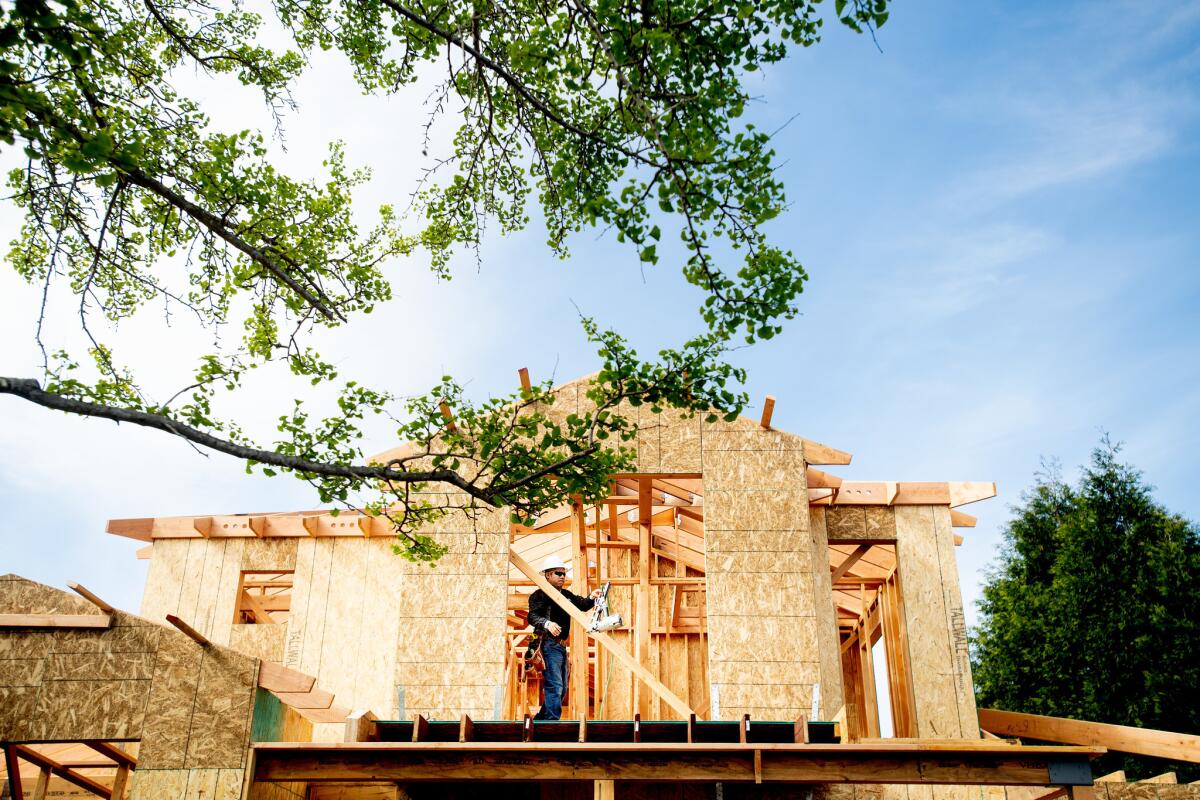Opinion: SB 50 is back. If you care about California’s housing crisis, give it a chance this time

Senate Bill 50 is back, and California lawmakers have a little over three weeks to demonstrate that they are serious about solving the state’s debilitating housing shortage.
SB 50 is the controversial measure from Sen. Scott Wiener (D-San Francisco) that would override local zoning laws to allow mid-rise apartment buildings to be constructed within half a mile of major transit stops or in “jobs-rich” areas, even in single-family neighborhoods.
The bill was shelved unceremoniously last spring amid opposition from local officials. Now the bill has to pass the state Senate by Jan. 31 to stay alive for more discussion, negotiation and, inevitably, more compromise.
Whatever you think of SB 50 — and chances are you have an opinion; there are few bills that have inspired so much love or hate — it’s pretty much the only serious proposal on the table that deals with the root causes of the state’s housing shortage, including the decades-long failure to construct enough homes to keep up with population growth and the zoning restrictions that dramatically limit the number of homes that can be built. If the bill fails to leave the Senate, then California’s most ambitious effort to spur housing construction will be dead, again, for another year.
Wiener this week unveiled amendments to SB 50 that could (or should) alleviate one of the biggest criticisms of the proposal: That by overriding local control, the bill robs well-intentioned communities of the opportunity to accommodate denser and more affordable housing near transit on their own terms.
Wiener says he took to heart those concerns and local officials’ desire for flexibility. Now SB 50 allows cities two years to adopt their own plans to achieve the bill’s central goal, which is to greatly increase the amount of market-rate and affordable housing built near transit and job centers.
The local plans would have to zone for as much housing as would be allowed under the original SB 50 requirements, without increasing car travel or concentrating the new homes in low-income areas while leaving more affluent areas untouched. For example, a city could allow taller apartment buildings in a neighborhood outfitted to support greater density, while allowing smaller apartment buildings in another. Communities at risk of gentrification and displacement would have five years to develop plans.
The city plans would still require developers of projects with 11 or more units to pay a fee that would be used to finance affordable housing elsewhere or provide affordable apartments in their own buildings.
The California Department of Housing and Community Development would have the power to review and reject the local plans. If a city doesn’t adopt a sufficient plan, then the SB 50 provisions would kick in. That means developers would be allowed to build four-to-five-story apartment buildings near transit stations and smaller buildings in jobs-rich neighborhoods.
So, will the amended SB 50 have a better chance of survival? It still faces strong opposition from tenants rights groups, which argue it will fuel gentrification and won’t produce enough affordable housing. Some of the most vocal opponents of SB 50, such as the Los Angeles City Council, professed to support the goal of building more housing near transit and workplaces, but they didn’t want to lose local control and the ability to deal with community-specific concerns, like historic preservation, gentrification and displacement.
Now, Wiener has attempted to give cities flexibility to address legitimate issues that arise from new housing development and a deadline to do it.
More to Read
A cure for the common opinion
Get thought-provoking perspectives with our weekly newsletter.
You may occasionally receive promotional content from the Los Angeles Times.











